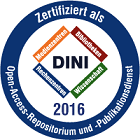Müller, Björn: Population structure, reproductive behaviour and population density of the European wild boar, Sus scrofa, based on STR marker studies of hunting bags in Lower Saxony, Germany. - Bonn, 2025. - Dissertation, Rheinische Friedrich-Wilhelms-Universität Bonn.
Online-Ausgabe in bonndoc: https://nbn-resolving.org/urn:nbn:de:hbz:5-80737
Online-Ausgabe in bonndoc: https://nbn-resolving.org/urn:nbn:de:hbz:5-80737
@phdthesis{handle:20.500.11811/12957,
urn: https://nbn-resolving.org/urn:nbn:de:hbz:5-80737,
doi: https://doi.org/10.48565/bonndoc-534,
author = {{Björn Müller}},
title = {Population structure, reproductive behaviour and population density of the European wild boar, Sus scrofa, based on STR marker studies of hunting bags in Lower Saxony, Germany},
school = {Rheinische Friedrich-Wilhelms-Universität Bonn},
year = 2025,
month = mar,
note = {Population densities and relative abundance of the European wild boar, Sus scrofa, has been steadily increasing throughout Europe for decades. Due to climate changes, wild boar is able to expand into climatic regions that have long been unsuitable habitats. Intensified agricultural use has resulted in the availability of large quantities of crop fields as a habitat and food source. The omnivorous choice of food enables an increasing expansion even into urban areas. Furthermore, wild boar has exceptionally high reproduction rates. This overpopulation leads to a variety of problems e.g. intensive crop damage or increasing numbers of vehicle collisions in both rural and urban areas. In addition, the wild boar is host to numerous zoonoses, of which African swine fever (ASF) in particular is a great endangerment to the pig fattening industry.
Despite a significant intensification of hunting measures, it has not yet been possible to reduce the populations. High reproduction rates, enormous plasticity and inadequate hunting strategies makes harvest rates insufficient. In addition, hunting success has been difficult to quantify in concrete numbers. This makes it difficult to realise the aforementioned population reduction.
Great efforts have also been made by researchers to find out more about the biology and behaviour of wild boar. For 20 years, the use of DNA markers, such as STRs, in ecology has been one of the central instruments for determining e.g. kinship relationships to demonstrate the influence of anthropogenic barriers or habitat fragmentation on gene flow between populations.
One of the most important sources of information for managing wild boar are the annual culling numbers, the hunting bags. However, the hunting bag is not suitable for population estimates based on simple extrapolations, as the actual population size is significantly underestimated. The central task of this work is to link hunting bag as a source of genetic samples and data with the use of STR markers to answer specific questions concerning genetic structuring, extent of alternative reproductive tactics and density of populations using kinship-based capture-mark-recapture (CMR) methods.
Using 14 microsatellites and 910 wild boar samples from different hunting bags, it was possible to identify eight distinct subpopulations in the study area. The reasons for the substructuring were not always the same and the genetic exchange between populations is rather low. In addition, multiple paternity rates, i.e. a litter of a pregnant female is fertilised by more than one male, of 23%-30% were detected in some populations. The assumption that male biased hunting strategies could influence MP rates does not seem to be confirmed. With the development of a genetic CMR estimator, it was possible to establish a population density calculation method that can compute robust population sizes when the necessary sampling requirements are met. The practical application of the g-CMR estimator resulted in an underestimation of the actual population size, mainly due to too small sampling sizes.
This study has shown that the hunting bag is a suitable tool for collecting genetic samples and generating genotype data, which can be used to answer a wide range of questions, but here is still a greater need for optimisation when calculating population densities. Unrestricted use of the hunting bags can therefore not yet be recommended at the present time. It therefore seems reasonable and purposeful to optimise the procedure presented here in further studies in order to use the full potential of genetic studies of the hunting bag.},
url = {https://hdl.handle.net/20.500.11811/12957}
}
urn: https://nbn-resolving.org/urn:nbn:de:hbz:5-80737,
doi: https://doi.org/10.48565/bonndoc-534,
author = {{Björn Müller}},
title = {Population structure, reproductive behaviour and population density of the European wild boar, Sus scrofa, based on STR marker studies of hunting bags in Lower Saxony, Germany},
school = {Rheinische Friedrich-Wilhelms-Universität Bonn},
year = 2025,
month = mar,
note = {Population densities and relative abundance of the European wild boar, Sus scrofa, has been steadily increasing throughout Europe for decades. Due to climate changes, wild boar is able to expand into climatic regions that have long been unsuitable habitats. Intensified agricultural use has resulted in the availability of large quantities of crop fields as a habitat and food source. The omnivorous choice of food enables an increasing expansion even into urban areas. Furthermore, wild boar has exceptionally high reproduction rates. This overpopulation leads to a variety of problems e.g. intensive crop damage or increasing numbers of vehicle collisions in both rural and urban areas. In addition, the wild boar is host to numerous zoonoses, of which African swine fever (ASF) in particular is a great endangerment to the pig fattening industry.
Despite a significant intensification of hunting measures, it has not yet been possible to reduce the populations. High reproduction rates, enormous plasticity and inadequate hunting strategies makes harvest rates insufficient. In addition, hunting success has been difficult to quantify in concrete numbers. This makes it difficult to realise the aforementioned population reduction.
Great efforts have also been made by researchers to find out more about the biology and behaviour of wild boar. For 20 years, the use of DNA markers, such as STRs, in ecology has been one of the central instruments for determining e.g. kinship relationships to demonstrate the influence of anthropogenic barriers or habitat fragmentation on gene flow between populations.
One of the most important sources of information for managing wild boar are the annual culling numbers, the hunting bags. However, the hunting bag is not suitable for population estimates based on simple extrapolations, as the actual population size is significantly underestimated. The central task of this work is to link hunting bag as a source of genetic samples and data with the use of STR markers to answer specific questions concerning genetic structuring, extent of alternative reproductive tactics and density of populations using kinship-based capture-mark-recapture (CMR) methods.
Using 14 microsatellites and 910 wild boar samples from different hunting bags, it was possible to identify eight distinct subpopulations in the study area. The reasons for the substructuring were not always the same and the genetic exchange between populations is rather low. In addition, multiple paternity rates, i.e. a litter of a pregnant female is fertilised by more than one male, of 23%-30% were detected in some populations. The assumption that male biased hunting strategies could influence MP rates does not seem to be confirmed. With the development of a genetic CMR estimator, it was possible to establish a population density calculation method that can compute robust population sizes when the necessary sampling requirements are met. The practical application of the g-CMR estimator resulted in an underestimation of the actual population size, mainly due to too small sampling sizes.
This study has shown that the hunting bag is a suitable tool for collecting genetic samples and generating genotype data, which can be used to answer a wide range of questions, but here is still a greater need for optimisation when calculating population densities. Unrestricted use of the hunting bags can therefore not yet be recommended at the present time. It therefore seems reasonable and purposeful to optimise the procedure presented here in further studies in order to use the full potential of genetic studies of the hunting bag.},
url = {https://hdl.handle.net/20.500.11811/12957}
}






